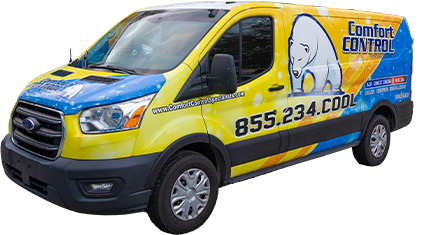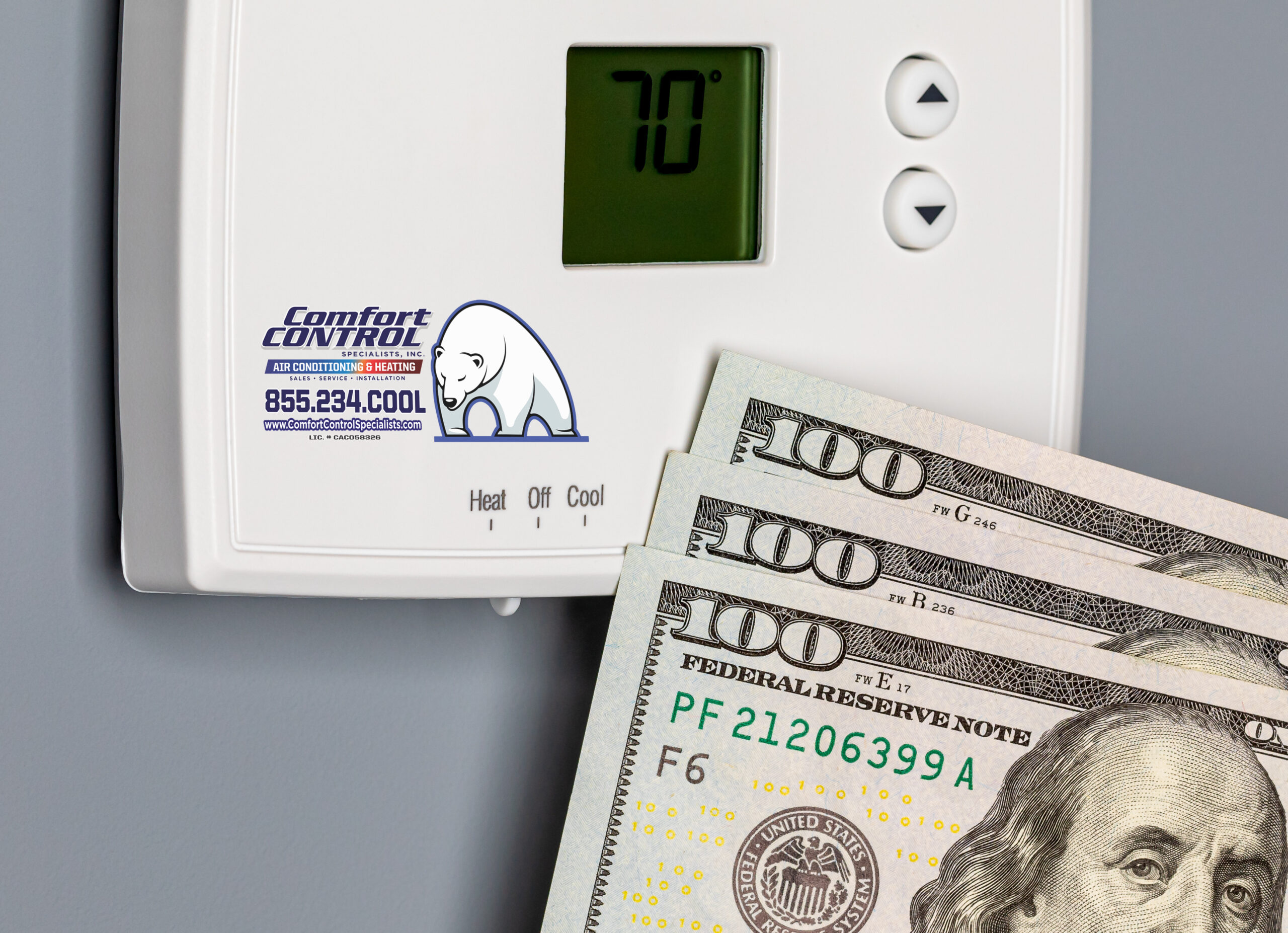[vc_row][vc_column][vc_column_text]
Money-saving programs available for Florida homeowners:
There are some exciting money-saving programs available for Florida homeowners looking to upgrade their current HVAC system to a new more energy-efficient heat pump in 2023. Updates to the Inflation Reduction Act (IRA) further incentivize homeowners to make energy-efficiency upgrades to their home by installing high-efficiency heating, cooling, water-heating equipment, and more. The largest credits and rebates are available for heat pumps, a high-efficiency system that heats and cools your home in place of a traditional air conditioner and furnace. When coupled with cleaner electricity sources, a heat pump can be a sustainable way to control the temperature indoors. Here is everything you need to know about heat pumps, IRA Tax Credits, HEEHRA Heat Pump rebates, and whether you qualify.
What are Heat Pumps?
Heat pumps are a type of HVAC equipment that provides both heating and cooling for homes and buildings. They work by transferring heat from one location to another, rather than generating heat through the combustion of fossil fuels like natural gas or oil. In the warmer months, a heat pump pulls heat from the inside of your home and moves it outside. In the colder months, the process is reversed, collecting heat from the outdoor air and moving it indoors. This makes heat pumps an energy-efficient and environmentally friendly alternative to traditional HVAC systems.
One of the main benefits of heat pumps is their energy efficiency. Because they rely on the transfer of heat rather than the generation of heat, they use significantly less energy than traditional heating and cooling systems. This can result in substantial energy cost savings for homeowners and building owners, especially in climates where heating and cooling are required for much of the year.
Heat pumps also have a number of environmental benefits. Because they use less energy and do not rely on the combustion of fossil fuels, they produce fewer greenhouse gas emissions than traditional heating and cooling systems. This can help to reduce the overall carbon footprint of a home or building and contribute to the fight against climate change.
Heat pumps are very versatile, as they can be used to heat and cool both homes and commercial buildings. They can be used in a variety of climates, including both cold and hot climates, and can be an effective alternative to traditional heating and cooling systems in both cases.
2023 Heat Pump Tax Incentives
The Inflation Reduction Act (IRA), signed in August 2022, includes nearly $370B dedicated to climate and energy programs. The IRA includes a substantial increase in limits and an extension of the already popular Energy Efficiency Home Improvement Tax Credit (25C). Previously, there was a lifetime limit of $500/per taxpayer, this has now been replaced with an annual limit. This means you have a limit for each year, but you can now claim energy improvements on your home year over year. With the 2023 updates the IRA now provides for an annual credit of 30% of the project’s cost, and up to a $2,000 annual limit for a qualifying heat pump.
2023 HEEHRA Heat Pump Rebate
Additionally, the updated IRA includes an exciting new rebate program known as HEEHRA (High-Efficiency Electric Home Rebate Act) aimed at providing instant savings to homeowners looking to purchase energy-efficient upgrades for their homes. HEEHRA will help American families save money on their monthly energy bills, create healthier indoor air environments, and reduce carbon emissions. The HEEHRA rebate provides up to $14,000 to cover various costs to electrify homes in low-income and moderate-income households. Ready for even more great news? HEEHRA can stack with federal energy efficiency and electrification tax credits! That means you can receive the HEEHRA rebate and still take advantage of claiming the IRA tax credit.
2023 HEEHRA Program Requirements
- If your household income is less than 80% of your area’s median income, you’re eligible to receive the maximum rebate of $8,000 for a new heat pump.
- If your household income is 81-150% of your area’s median income, you’re eligible to receive up to 50% of the maximum heat pump rebate.
- If your household income exceeds 150% of your area’s median income you aren’t eligible for the HEEHRA rebates but can still receive a 30% tax credit of up to $2,000 on a new heat pump.
You can look up your Area Median Income using this:
Click here for the Area Median Income Lookup Tool

If you’re a homeowner in Springhill, FL and you’re concerned about the health and safety of your home, or your energy bills, then HEEHRA is the perfect resource for you. The program can help you identify and address potential hazards, as well as improve the energy efficiency of your home, so you can stay cool and comfortable all year round.
Don’t wait any longer, contact the Comfort Control Specialists today and schedule your AC repair, tune-up, or maintenance in Springhill, FL. If you’re looking for a reliable and professional company to help with your AC repair needs, HEEHRA is the right choice. With their help, you can have peace of mind knowing that your home is safe, healthy, and energy-efficient.
In conclusion, HEEHRA program is a must-have resource for homeowners in Springhill, FL, especially when it comes to AC repair, maintenance, and assistance. These energy efficiency and electrification rebates take effect on January 1, 2023 and run through September 30, 2031.
For more information on how this program can help save you money please Contact Us![/vc_column_text][vc_column_text]
Frequently Asked Questions:
Will HEEHRA reduce up-front costs for consumers?
Yes! HEEHRA’s up-front discounts will cover up to 100 percent of costs at the point of sale.
Can qualified renters utilize HEEHRA?
Yes! Renters may be specifically interested in HEEHRA discounts for portable appliances like window-unit heat pumps and induction cooktops.
Who qualifies for HEEHRA?
HEEHR discounts are reserved for low- and moderate-income households. Households can use Rewiring America’s IRA Savings Calculator to determine their eligibility.
When exactly will HEEHRA be available?
Our best guess is that HEEHRA discounts may start to become available by the second half of 2023, but the exact timeline depends on DOE guidance and state implementation plans.
If HEEHR discounts become available in the second half of 2023, will they be retroactive?
It’s up to the states!
Does HEEHRA have efficiency requirements?
Yes. HEEHRA rebates are applicable only to ENERGY STAR-certified appliances (where such categories exist), including heat pumps, heat pump water heaters, heat pump clothes dryers, and weatherization products.
Does HEEHR incentivize both geothermal and air-source heat pumps?
Yes!
Does HEEHRA include contractor incentives?
Yes, HEEHRA includes contractor rebates of up to $500 per project.
How can multi-family building owners qualify for HEEHRA?
If 50 percent or more of the building is occupied by LMI households, building owners can utilize HEEHRA rebates up to $14,000 per eligible unit.
Can HEEHRA be stacked with federal tax credits?
Yes! HEEHRA can stack with federal energy efficiency and electrification tax credits (e.g., 25C and 25D).
Can HEEHRA be stacked with other federal grants?
Yes, but not for the same single upgrade. However, households pursuing a multi-upgrade retrofit can use HEEHRA for some upgrades and other federal grants or rebates for other upgrades. HEEHRA should also be implemented with the ability to braid into WAP and LIHEAP.
Can HEEHRA be stacked with state programs?
HEEHRA can stack with state programs per state discretion, so households and contractors should consult with their State Energy Offices.
What is the Whole Home Energy Reduction Rebate Program, and how does it interact with HEEHRA?
- The Whole Home Energy Reduction Rebate Program (also known as “HOPE for HOMES” or “HOMES”) is a rebate program that rewards modeled (pre-upgrade) or measured (post-upgrade) energy savings.
- HOMES rebates can be maximized by pairing electrification and weatherization upgrades.
- HEEHR and HOMES cannot be combined for the same single upgrade, but can be stacked for different upgrades within the same household, should that household meet both program’s eligibility requirements.
- While low-income households will receive larger and more accessible up-front discounts from HEEHR, non-LMI households are prime candidates for HOMES rebates.
[/vc_column_text][/vc_column][/vc_row]



